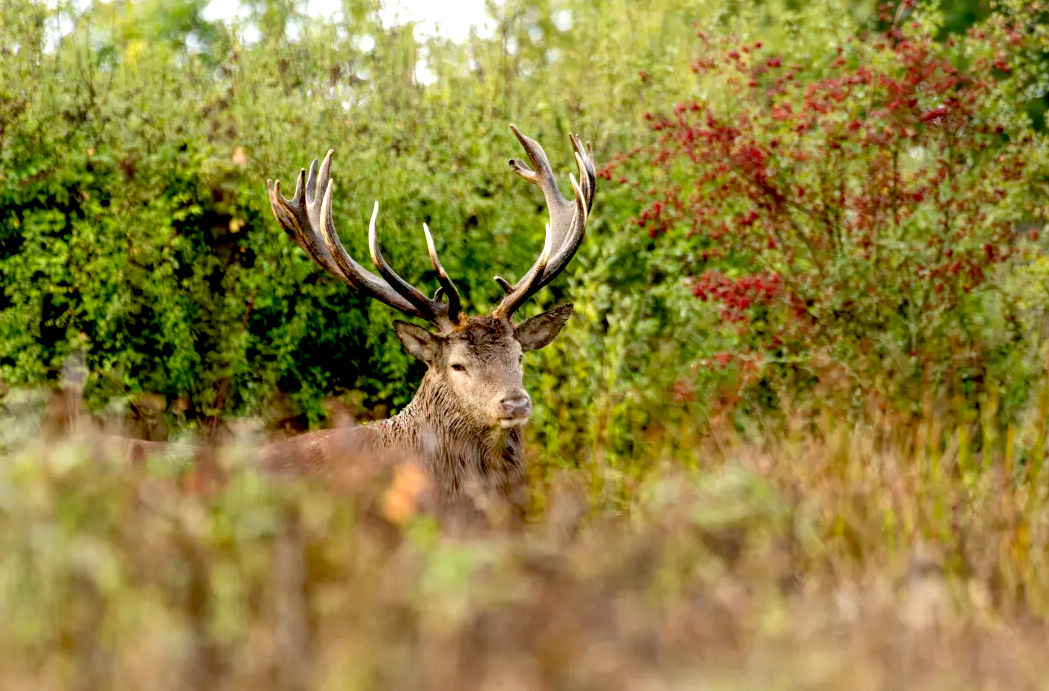
This
is a field just 400 yards outside of Herstmonceux village in
2024. See the picture below of the same field around ten years
ago in 2014. The field is now awash with oak saplings and other
shrubs, helping to support wildlife. 2024 has seen a huge
reduction in insects. Scientists don't know if this is caused by
climate change, or other factors, such as air pollution having a
direct effect on fauna. Much as humans are suffering from
breathing disorders, including lung cancer, from inhaling diesel
particulates and petrol fume carcinogens.
Rewilding Sussex was set up by Chris Sandom, Lecturer at University of Sussex, in 2014 as a community group to engage people with rewilding locally. They quickly gained members, and group meetings and made outings to the wilder places in the South of England, like Knepp Wildlands and Ham Fen for inspiration.
Rewilding Sussex aims to aid in the recovery of nature in Sussex to a more natural self-reliant state, for the benefit of nature and people. They are looking to drive community led action on the ground, and involve projects and landholdings with this local vision.
The local network have launched many successful projects, including the Re-Discover project in 2015 and Through the Bush Backwards more recently.
Rewilding Sussex aims to aid in the recovery of nature in Sussex to a more natural self-reliant state, for the benefit of nature and people.
By restoring the landscape and its flora and fauna to a wilder state, benefits society receives from nature, such as pollination and flood mitigation, can be greatly improved.

A
Red Deer in Sussex
Rewilding is all about letting nature be spontaneous, dynamic, and unpredictable. Rather than trying to manage and control which plants, animals, and habitats thrive, it is about sitting back and letting nature decide. This can be done in your back garden or at the landscape scale.
If you speak to rewilders, and we have spoken to a few, the thing they all seem to have in common is that they celebrate the unexpected species that are now doing well in their wild patch. For example, at Knepp Wildlands in Sussex it is the unexpected success of nightingales, purple emperor butterflies, and turtle doves since this farm has gone wild that bring the most excitement. This is because their return and success are down to nature doing its own thing and it is teaching us new things about how these species live.
Before humans’ recent evolution and colonisation of the world, nature created and maintained the diversity of life (all living plants & animals) on Earth very effectively. It did and does this through evolutionary and ecological processes- evolutionary processes create new species and ecological processes help maintain the diversity of life through the interactions of plants, animals, and their environment (e.g. pollination and predation).
Humans are changing and breaking down these processes by converting diverse wild lands into more uniform agricultural land, killing off species, introducing non-native species, and changing the climate. Nature only needs management when evolutionary and ecological processes are not working. Rewilding asks: how do we get as many of these natural processes working again as soon as possible and so reduce the need for management?
The first step is bigger and more joined up space for nature. Then, as far as possible, we want to recover nature’s complexity by putting back the plants and animals that have been lost. We need to help the return of all the different species that had different roles within the ecosystem. We need beavers because they build dams, that create wetlands that are home to so many plants and animals. We need wild boar to root up the vegetation and soil to reset succession and create new space for early colonisers to live. We need big herbivores to graze and browse the vegetation to increase the diversity of habitat. We need big predators to move those herbivores around and make sure their numbers vary over the years to increase the diversity of habitat again. The animals described here are known as ‘ecosystem engineers’ and ‘keystone’ species because of the important roles they play in creating space for other plants and animals.
Nature is a complex system of interacting parts, and it is more stable and more resilient to change the more diverse and complex it is. To have all the species needed in the ecosystem you need big and well-connected spaces. This won’t always be possible but that is the ambition! But all wild space is important for creating a home for nature, providing benefits to people, and connecting people and nature.

The
field above around ten years ago in 2014. This field has been
enjoyed by country lovers in around and passing through the
little village of Herstmonceux in East Sussex. Ramblers, hikers
and dog walker come from as far away as Battle and Hailsham, on
their way to Pevensey and the Levels that is a Site of Special
Scientific Interest (SSSI). One reason this field has been
spared the rash of housing estate developments is because of
drainage, and the potential contamination of an ancient well in
adjoining land at Herstmonceux Museum.
WHAT
IS REWILDING?
..
https://
|

